Introduction: Tattoos In Spain And Its Cultural Significance
Tattoos have been a part of human culture for centuries, and Spain is no exception. With its rich history and diverse influences, the Spanish tattoo scene offers an intriguing blend of traditional designs and modern trends.
In recent years, tattoos have gained popularity in Spain thanks to influential figures such as soccer players proudly displaying their body art. However, before you book your flight to Madrid or Barcelona for some ink therapy, it’s essential to understand the cultural significance behind these designs and the legal aspects surrounding getting a tattoo in Spain.
Key Takeaways
- Traditional tattooing practices in Spain have deep cultural roots, tracing back to the Pre-Roman period with designs that feature religious icons, emblems of family loyalty, and animals.
- Contemporary Spanish tattoo culture reflects a blend of traditional artistry with global styles such as Japanese, Polynesian, and Thai designs alongside modern trends like minimalist geometric patterns or realistic tattoos.
- Understanding legal requirements for getting a tattoo in Spain is essential; those under 18 must have written permission from a parent or guardian. Tattoo artists must verify their identity and obtain written consent before tattooing minors. Additionally, it’s essential to choose only licensed professionals working in registered establishments meeting hygiene standards.
- Popular symbolic tattoos among Spaniards include Lauburu (a Basque cross), Giralda (a famous bell tower), and insignia representing different regions of Spain, along with phrases such as “familia” signifying the importance of family values. Religious tattoos tend to be more abstract than overtly depicting sacred symbols due to Catholicism’s strong presence throughout the country.
Table of Contents
The History And Culture Of Tattoos In Spain
Traditional tattooing practices and techniques have been a part of Spanish culture for centuries, with designs featuring religious icons, emblems of family loyalty, and animals.
Traditional Tattooing Practices And Techniques
Traditional tattooing practices in Spain have deep cultural roots, tracing back to the Pre-Roman period. People at that time used tattoos as a form of personal identification or to signify belonging to a specific tribe.
Tattooing methods were simple but effective, often involving the use of soot and ash mixed with water or oil for ink and sharp instruments such as needles or bone fragments for puncturing the skin.
Fast forward several centuries, and you will find that modern Spanish tattooing has evolved considerably from its antiquated origins while still preserving elements of tradition.
Some traditional Spanish tattoos feature religious symbols like crosses and angels alongside cultural imagery representing family heritage or ancestral pride. Meanwhile, other artists may draw inspiration from indigenous tribal patterns or even Japanese styles – where tattoos aren’t restricted to just one body part but instead flow harmoniously across larger areas like full sleeves or back pieces.
Modernization And Emergence Of New Trends
The modernization of tattoos in Spain has brought about a remarkable shift in both design and societal attitudes. Similar to the rise of tattoo culture in Madrid, Spanish artists now draw inspiration from various global styles, such as Japanese, Polynesian, and Thai designs, while incorporating traditional Spanish elements.
As more men embrace their individuality through body art, they are expanding their knowledge beyond merely what looks good but also the cultural significance behind these designs.
For instance, some popular traditional Spanish tattoos include symbols like the Lauburu (a Basque cross), Giralda (a famous bell tower), or the coat of arms representing different regions of Spain.
Men who choose to get these small tattoos are not only investing in visually impactful art but also connecting with Spain’s diverse heritage. Similarly, those opting for newer motifs, such as geometric patterns or minimalist designs, demonstrate an appreciation for current artistic movements within tattooing circles globally.
Attitudes Towards Tattoos In Spanish Society
In Spanish society, attitudes towards tattoos have undergone a significant transformation in recent years. Once regarded as taboo and associated with criminality or deviance, they are now increasingly welcomed and embraced as a form of personal expression.
Although acceptance continues to grow, Spanish culture still maintains its conservative roots when it comes to certain tattoo themes and placements. For example, religious tattoos tend to be more discreet or abstract rather than overtly depicting sacred symbols due to the strong Catholic presence in the country.
“Familia,” a popular tattoo choice among Spaniards, signifies the importance of family values that prevail throughout Spain. Similarly, phrases such as “semper ad meliora” meaning “always towards better things,” exemplify the optimistic outlook many Spaniards hold for both themselves and their nation.
Tattoo Regulations In Spain
Spain has strict regulations when it comes to tattooing, including age restrictions and legal requirements for licensing and hygiene standards that all tattoo artists must adhere to.
Age Restrictions And Legal Requirements
Tattooing in Spain is legal for adults, but minors require parental consent. Here are some important points to know about age restrictions and legal requirements:
- In Spain, there are no specific age restrictions for getting a tattoo, but anyone under 18 must have written permission from a parent or guardian.
- Tattoo artists must verify the identity of the individual and obtain written consent from parents or guardians before tattooing a minor.
- The legal age for body piercing is also 18, with the exception of earlobe piercing for minors.
- Tattooing must be done by licensed professionals in registered tattoo establishments in Spain.
- The use of non-sterile equipment or tattooing in unlicensed establishments is illegal in Spain.
- To become a licensed tattoo artist in Spain, individuals must undergo training in hygiene and safety, including blood-borne pathogen training.
- The Spanish Ministry of Health provides guidelines for tattoo artists to ensure the safety of clients and prevent the spread of infectious diseases. These guidelines include proper sterilization techniques and disposal of contaminated materials.
By understanding the age restrictions and legal requirements associated with getting a tattoo in Spain, individuals can make informed decisions about their body art choices.
Licensing And Hygiene Standards For Tattoo Artists
Tattoo artists in Spain need to obtain a permit to operate a tattoo studio and adhere to strict hygiene standards to ensure customers’ safety. Here are some key points about licensing and hygiene standards for tattoo artists in Spain:
- Tattoo studios must be registered with the regional government authorities.
- Tattoo artists must pass health checks and undergo training on proper hygiene practices before obtaining a permit.
- The use of disposable gloves, needles, ink caps, and other supplies is mandatory during the tattooing process.
- Tattoo equipment needs to be properly sterilized before each use.
- Aseptic techniques must be followed during tattooing.to prevent infections and cross-contamination.
- Customers should receive aftercare instructions from the artist to prevent complications and promote healing.
- Health inspectors can perform unannounced visits to tattoo studios to check hygiene standards and compliance with regulations.
By choosing a licensed and reputable tattoo artist who follows these guidelines, you can ensure a safe and enjoyable experience when getting a tattoo in Spain.
Restrictions On Tattoo Placements
Tattoos are a widely accepted form of body art in Spain, but there are still some restrictions on where they can be placed. In general, tattoos on the face, neck, and hands are frowned upon by society and may even limit job opportunities.
It’s important to research local customs and norms before getting a tattoo in Spain to avoid any cultural misunderstandings.
Popular Tattoo Designs And Styles In Spain
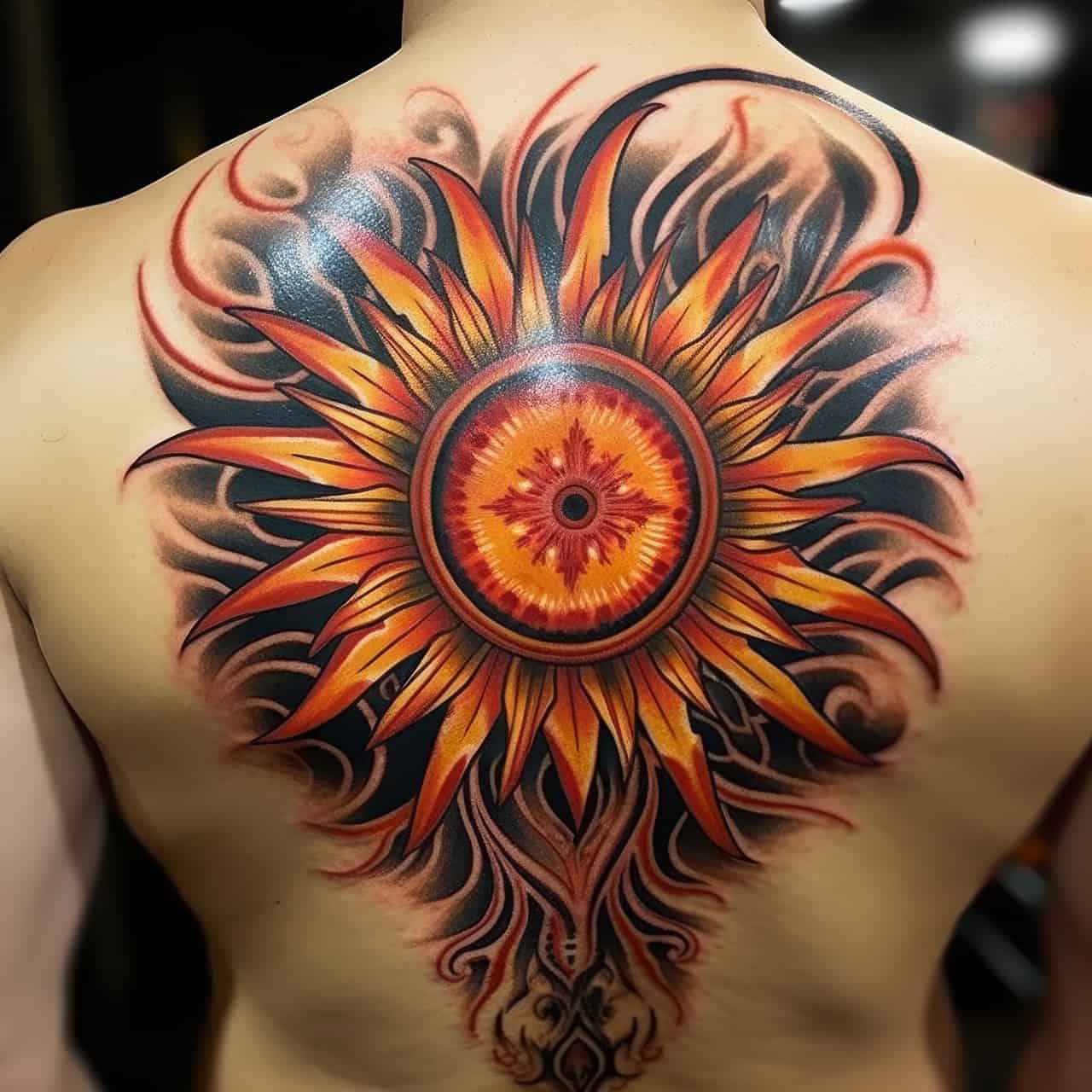
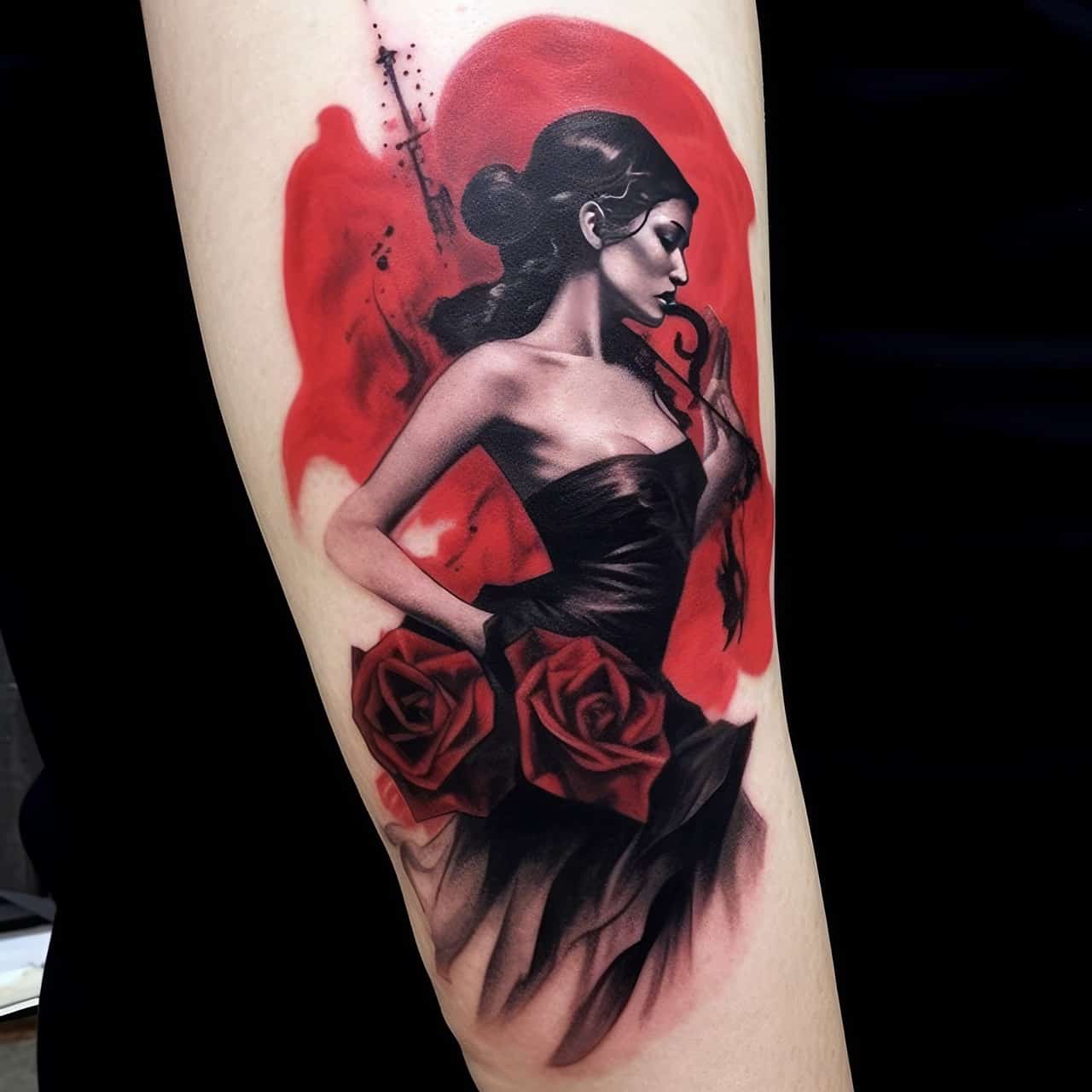

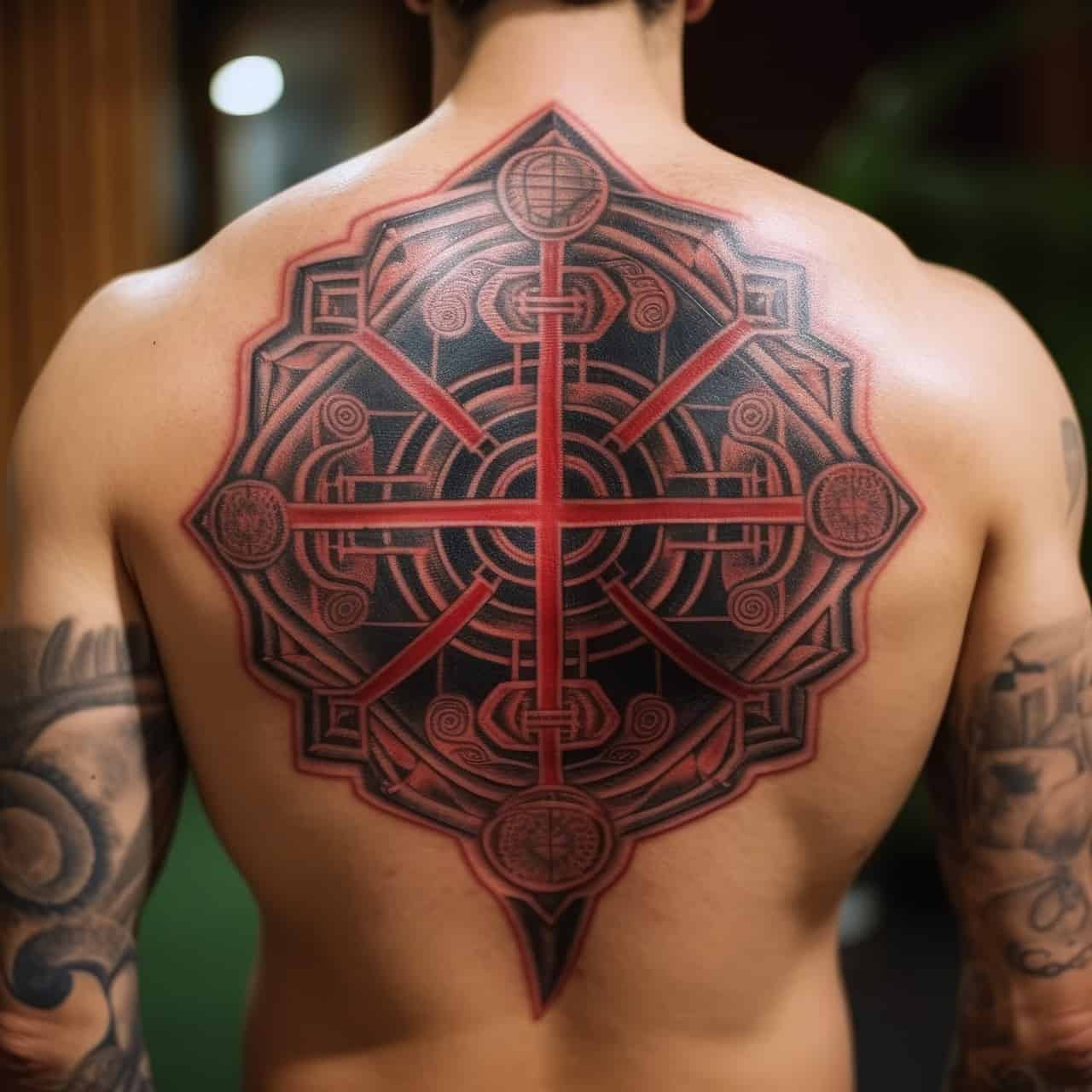
Spanish-inspired designs and contemporary styles are both popular in the Spanish tattoo scene, with symbolism and meanings behind tattoos playing a significant role in the decision-making process.
Traditional Spanish-inspired Designs
Traditional Spanish-inspired designs are a popular choice among those getting tattoos in Spain. Here are some examples of these designs:
- Bull: A symbol of strength, courage, and power in Spanish culture.
- Flamenco dancer: Represents passion, emotion, and traditional Spanish dance.
- Matador: A brave fighter who faces danger with grace and precision.
- Galleon ship: An old-fashioned sailing vessel that symbolizes adventure and exploration.
- Rosary beads: A deeply religious symbol for Spanish Catholics.
- Fleur-de-lis: This stylized lily has been used as a decorative element in Spanish art and architecture for centuries.
- Coat of arms: Many families in Spain have their own coat of arms featuring symbols that represent their heritage or accomplishments.
These designs can be incorporated into larger pieces or stand alone as a smaller tattoo. Whether you want to show your pride in your heritage or simply appreciate the beauty of traditional Spanish art, there’s a design out there for everyone.
Contemporary Styles And Trends
Contemporary tattoo styles and trends in Spain are constantly evolving. From minimalist designs to bold, colorful tattoos, here are some popular styles to consider:
- Blackwork tattoos: This style involves using only black ink to create intricate designs and patterns. It has roots in traditional tattooing practices and has gained popularity in recent years.
- Watercolor tattoos: These tattoos feature a fluid, painted look with bright colors bleeding into one another. They are often inspired by art movements like Impressionism or Abstract Expressionism.
- Geometric tattoos: As the name suggests, these tattoos incorporate geometric shapes and lines to create symmetrical patterns and designs. They can range from small and subtle to large and complex.
- Dotwork tattoos: A modern take on pointillism, this style uses tiny dots to create shading and texture. It can produce stunning results that resemble intricate etchings or engravings.
- Realistic tattoos: This style aims to replicate a photograph or image as realistically as possible. It requires a skilled artist with an eye for detail and a mastery of shading techniques.
These are just a few of the many contemporary tattoo styles available in Spain today. Remember to do your research, find a reputable artist whose style aligns with your vision, and clearly communicate your expectations for your new tattoo.
Symbolism And Meanings Behind Spanish Tattoos
Spanish tattoos are rooted in the country’s rich history and culture, with many designs evoking traditional motifs and symbols. Popular Spanish tattoo designs often incorporate religious symbols like the cross or images of patron saints, representing faith and devotion.
Other popular Spanish tattoo symbols include matadors and bulls, which represent courage and strength. These designs can also be a nod to Spain’s bullfighting tradition.
For those seeking a more contemporary take on Spanish tattoos, there are plenty of styles that merge traditional motifs with modern elements. For instance, combining a classic rose design with bold black lines for a minimalist look can create a stylish yet meaningful piece of body art.
Getting A Tattoo In Spain: Tips, Considerations, And Recommendations
Research and find a reputable tattoo artist who follows all of the necessary hygiene standards and discuss your design ideas with them before getting any tattoos in Spain.
Researching And Finding A Reputable Tattoo Artist
Researching and finding the right tattoo artist can make a huge difference in the quality of your tattoo. Here are some tips on how to find a reputable tattoo artist in Spain:
- Start by researching online – you can use social media platforms like Instagram to explore different artists’ work, read reviews, and check their prices.
- Look for artists that specialize in the style of tattoo you want – whether that’s traditional Spanish tattoos or modern designs.
- Check out local tattoo shops – take some time to visit different studios and talk to the artists. This will give you a good sense of their style, professionalism, and hygiene standards.
- Ask for recommendations from friends – if you know someone who has a tattoo in Spain, ask them about their experience and if they would recommend their artist.
- Take your time – don’t rush into getting a tattoo from the first artist you meet. Take some time to research, compare prices, and communicate with the artist before making a decision.
By following these tips, you’ll be able to find a reputable tattoo artist who can create a beautiful design that you’ll love for years to come. Remember, it’s important to choose an artist who prioritizes hygiene standards and takes the time to understand your vision for the tattoo.
Communication And Language Considerations
When getting a tattoo in Spain, it’s important to consider the language barrier and how to effectively communicate your needs and preferences with the tattoo artist.
While English is widely spoken in tourist areas, Spanish is still the dominant language, especially outside of major cities. It may be helpful to bring a bilingual friend or use translation apps to ensure clear communication during consultations and appointments.
Additionally, cultural differences in communication styles should also be taken into account – Spaniards tend to value directness and honesty over indirect hints or politeness.
One example of miscommunication due to language barriers involves a man who wanted a quote for his new arm tattoo but accidentally translated it incorrectly before presenting it to the artist.
The resulting design ended up having an unintended meaning that he was not happy with.
Consultation, Pain Management, And Aftercare
When getting a tattoo in Spain, it’s important to consider factors such as pain management, immediate and long-term care, and options for removal. Here are some tips for consultation, pain management, and aftercare:
- Consultation: Before getting a tattoo, schedule a consultation with the artist to discuss your design ideas and placement. Ask about their experience, hygiene practices, and aftercare instructions.
- Pain Management: Tattoos can be painful, but there are ways to manage discomfort. Consider taking over-the-counter pain relievers before your appointment or using numbing creams during the process.
- Aftercare: Proper aftercare is crucial for preventing infection and ensuring the longevity of your tattoo. Follow the artist’s instructions for cleaning and moisturizing the area, avoid swimming or soaking in water for at least two weeks after getting a tattoo, and avoid wearing tight clothing or exposing the area to sunlight.
- Identifying Signs of Infection: It’s important to monitor your tattoo for signs of infection, such as swelling, redness, or pus. If you notice any concerning symptoms, contact your healthcare provider immediately.
By considering these factors before getting a tattoo in Spain or abroad, you can make an informed decision about this lifelong commitment.
Cultural Awareness And Respect
As with any tattoo, it’s important to consider the cultural significance behind your design choice. In Spain, certain symbols and artwork have deep-rooted meanings that should be respected.
For example, bullfighting is a traditional Spanish sport and a common theme for tattoos. However, some people may find this offensive due to animal cruelty concerns.
It’s also worth noting that Spain has a diverse population, and attitudes towards tattoos can vary depending on the region or community you’re in. Some conservative areas may view visible tattoos negatively or associate them with criminal activity.
Frequently Asked Questions (About Tattoos in Spain)
Is it legal to get a tattoo in Spain?
Yes, it is legal for individuals aged 18 and above to get a tattoo in Spain, provided the artist complies with health and safety regulations.
What are some popular tattoo styles in Spain?
Spanish tattoos often feature traditional imagery such as bulls, flamenco dancers, or religious symbols, but more modern styles like dotwork, watercolor, or blackwork have also gained popularity among younger generations.
Can I donate blood after getting a tattoo in Spain?
The Spanish Red Cross requires all donors to wait at least 4 months after getting a new tattoo before donating blood to ensure there’s no risk of cross-contamination between ink and needles.
Should I tip my tattoo artist in Spain?
Tipping isn’t mandatory, but it is appreciated if you feel the service was exceptional – generally, tipping around 10% of the total cost is considered reasonable. However – don’t feel obliged to tip if you are not completely satisfied with the work done by your artist!
Conclusion: Making An Informed Decision About Tattoos In Spain
After reading this article, I hope you feel more informed about the fascinating world of tattoos in Spain. Whether you’re interested in traditional designs or modern trends, it’s essential to consider safety and legal regulations before getting inked.
Remember to research reputable tattoo artists, communicate effectively with them, and prioritize proper aftercare.

Hello Jared,
When was the law regarding the tattooing of minors passed in Spain? When did it become law?